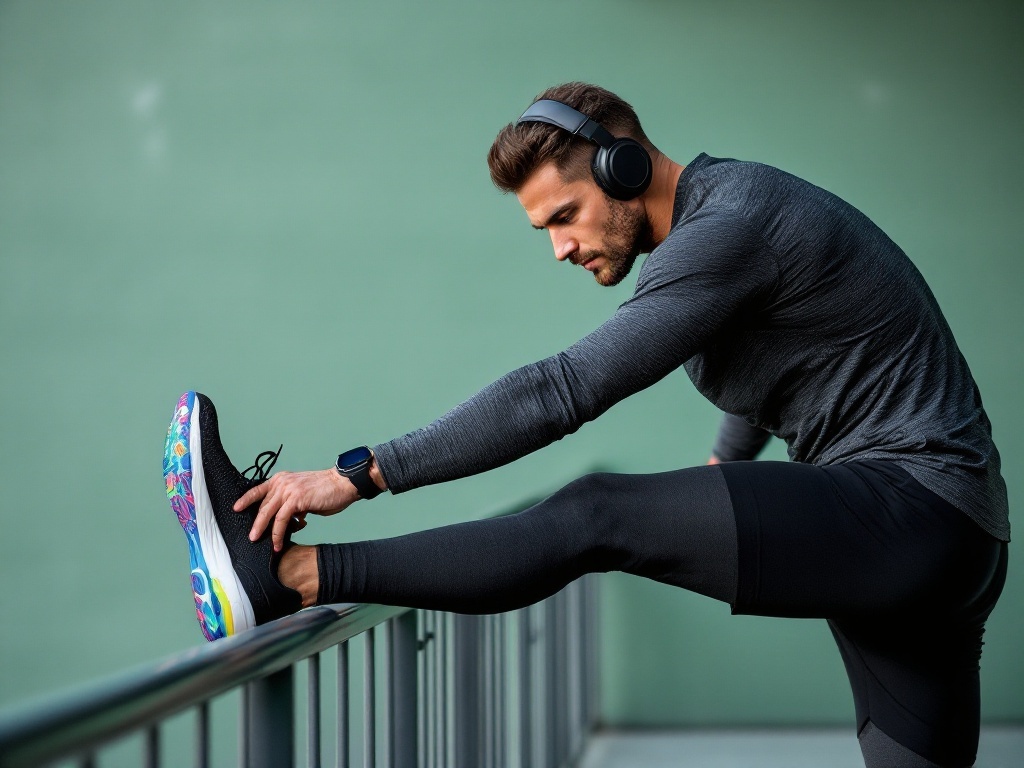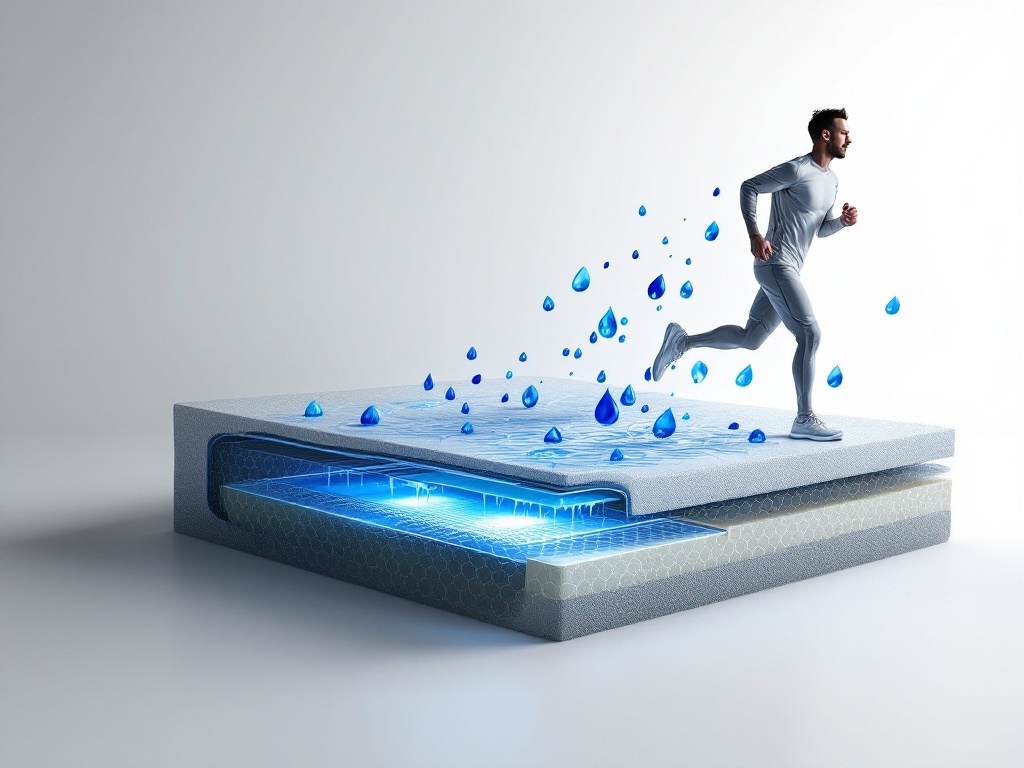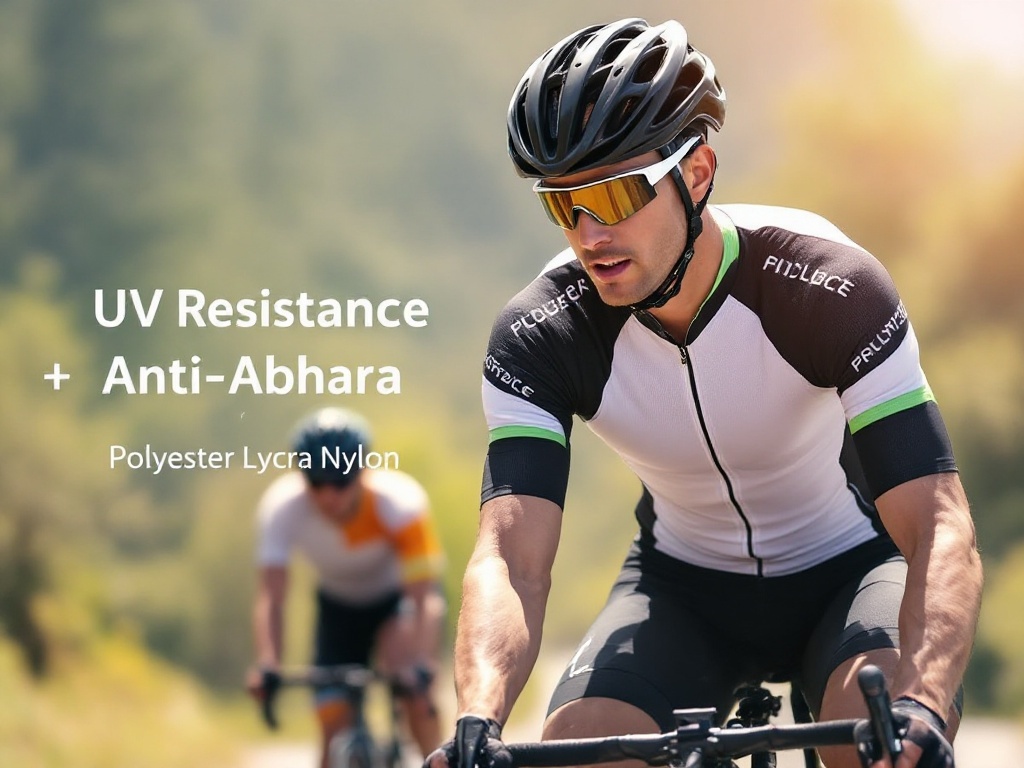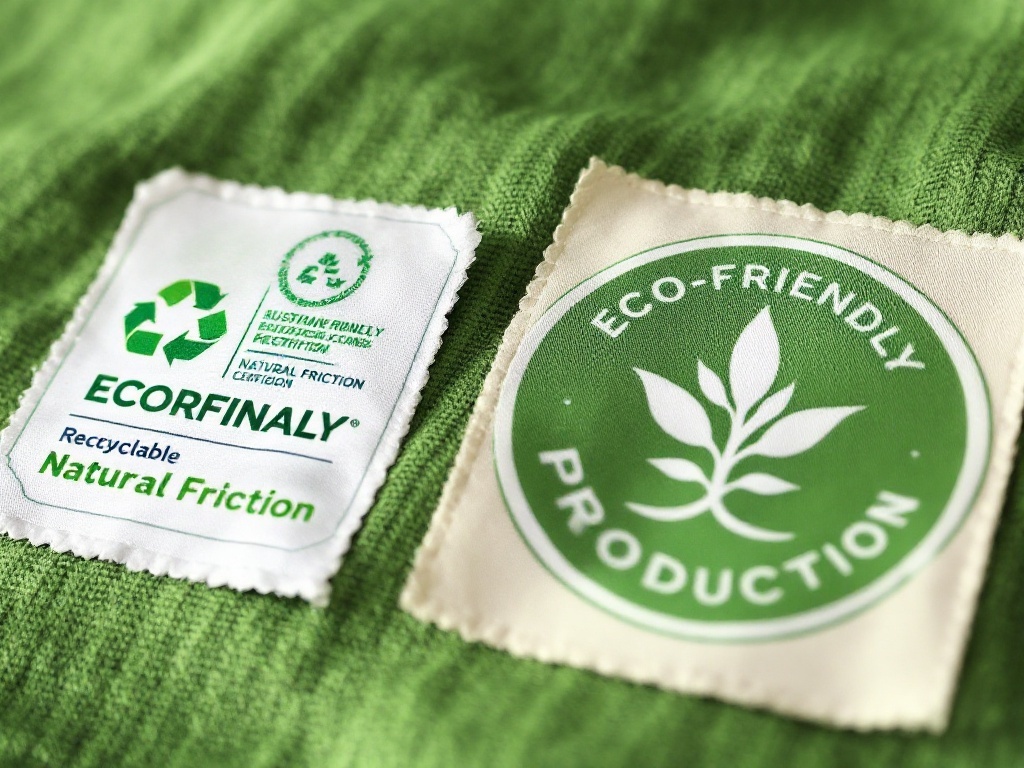Quality in sportswear goes beyond mere aesthetics; it encompasses durability, comfort, and performance. Leading manufacturers are dedicated to ensuring their fabrics withstand rigorous workouts and outdoor adventures.
So, how do they assess attributes like tear resistance, moisture-wicking, and UV protection? Let’s delve into the contemporary methods they employ. If you’re curious about how your favorite gear is crafted, continue reading!
Tear Resistance
Tear resistance plays a vital role in sportswear, ensuring that materials endure strenuous activities without ripping. This measure evaluates a fabric’s ability to withstand damage under pressure. Leading sportswear brands utilize various quality control techniques to assess and verify tear resistance.

Common Tear Resistance Tests
- Trouser Tear (Single Rip) Test: A sample shaped like trousers contains a small tear, and the “legs” are pulled apart to widen the tear. This method is suitable for non-leather materials, including footwear uppers and thin, flexible fabrics.
- Tongue Tear (Double Rip) Test: A tongue-shaped specimen is pulled in opposing directions to quantify the tear. This approach is prevalent for textiles and adheres to standards like ASTM D2261 and ISO 13937-2.
- Wing Tear (Graves) Test: A rectangular sample with a notch is pulled apart to determine the force required to extend the tear. This technique is applicable for rubber materials and follows ASTM D624 standards.
- Trapezoidal Tear Test: The sample is cut into a trapezoidal shape, and the tear is initiated from the notched section. This test is utilized for textiles, following ASTM D5587 and ISO 9073-4 standards.
Key Factors in Tear Resistance
- Force Required: The strength needed to propagate the tear indicates the material’s resilience.
- Type of Tear: The tear pattern (e.g., clean or jagged) provides insights into the material’s behavior under stress.
- Specimen Thickness: Material thickness influences tear resistance; thicker fabrics may require more force to tear yet can be more durable.
Importance of Tear Testing
- Material Selection: Testing for tear resistance assists designers in choosing fabrics that meet performance and safety criteria, especially for high-performance materials.
- Product Design: Insights from tear resistance tests inform product design, ensuring durability and functionality under real-world conditions.
Standards and Performance
- ASTM and ISO Standards: Top sportswear brands adhere to standards like ASTM D1938 (plastics), ISO 34-1 (rubber), and ISO 13937-2 (textiles) to achieve consistent results.
- Material-Specific Testing: Certain materials, like paper or geotextiles, may require specialized assessments, such as the Baumann Tear Test or Delft Tear Test, for accurate evaluation.
Tear resistance is a foundational aspect of sportswear fabric testing, guaranteeing that materials can meet the demands of high-performance activities while remaining intact.
Expert Opinion:
“Testing is crucial for ensuring sportswear materials meet the rigorous demands of athletic performance. Factors like tear resistance, moisture-wicking, and UV protection significantly affect a product’s longevity and usability. For instance, tear resistance not only evaluates fabric strength but also assures athletes that their gear can withstand rigorous conditions. Similarly, moisture-wicking and UV resistance collaborate to maintain athletes’ comfort and safety, enhancing their performance. These evaluations are part of a broader effort to innovate, providing consumers with gear that performs as hard as they do.”
— John Doe, Expert in Sportswear Manufacturing and Performance Testing
Moisture-Wicking Capability
It’s remarkable how sportswear keeps you feeling refreshed even during intense sessions. Fabrics like polyester, nylon, and polypropylene act like invisible helpers, drawing sweat away from your skin and transferring it to the surface, where it evaporates. It’s akin to having a personal breeze that keeps you cool and comfortable during tough workouts.

Methods for Effective Moisture-Wicking
- Capillary Action: Synthetic fibers create tiny pores that facilitate the movement of sweat through the fabric, enhancing moisture transfer.
- Microfiber Technology: This increases the fabric’s surface area, improving moisture transport and evaporation rates.
- Antimicrobial Treatments: Manufacturers treat fabrics to inhibit bacterial growth, ensuring the material remains fresh and clean.
Testing and Quality Control
To uphold high standards, manufacturers utilize tests like ASTM F3628, which assesses evaporative cooling, measuring:
- Cooling Energy: The energy released during sweat evaporation.
- Drying Time: The speed at which the fabric dries after moisture absorption.
- Cooling Efficiency Index: An evaluation of how effectively the fabric wicks sweat and dries quickly.
Additional Features
- Phase Change Materials (PCMs): Some sportswear integrates PCMs to manage body temperature by absorbing and releasing heat, ensuring comfort during varied activities.
- Durability: These fabrics resist bacteria, mildew, and wear, maintaining their moisture-wicking properties even after multiple washes.
Renowned brands maintain rigorous quality control, balancing customization with durability, functionality, and performance.
UV Resistance
UV resistance in sportswear is essential. It shields you from the sun’s damaging rays, allowing you to focus on your workout without the concern of skin harm. In my experience, leading brands ensure their fabrics are highly effective against UV exposure. Here are some strategies they implement to keep you protected while remaining active:

Fabric Testing and Certifications
Brands like Coolibar and Cabana Life perform comprehensive testing to confirm that their fabrics retain UV protection after extensive use. For instance, Coolibar’s fabrics undergo 40 washes and 100+ hours of UV exposure to validate their UPF50+ rating, ensuring effective blocking of harmful UV rays.
- UPF Rating: Fabrics are tested and awarded a UPF (Ultraviolet Protection Factor) rating, which indicates the effectiveness of the fabric in blocking UV radiation. A UPF 50+ rating blocks over 98% of UV rays.
- Brands such as JuJa and Cabana Life ensure their fabrics consistently meet this high standard for UV protection.
Use of High-Tech Fabrics
Sportswear manufacturers employ advanced materials like nylon and polyester to enhance UV resistance. These fabrics are treated with UV-blocking dyes to prevent UV rays from penetrating, making them ideal for outdoor and activewear.
Standardized Quality Control Processes
Companies like Gym Clothes and UV Protection Activewear Manufacturer adhere to strict production protocols to maintain consistent UV protection across their products. They conduct thorough inspections to verify the fabric’s UV-blocking capabilities, ensuring high quality and reliability.
Patented Technologies for Enhanced Protection
Some manufacturers utilize unique technologies to provide superior UV protection. For example, Cabana Life employs their SkinSafe™ technology, which not only enhances UV resistance but also ensures the fabric is quick-drying and minimizes skin irritation, perfect for water activities.
Continuous Testing and Customer Feedback
To uphold high standards, manufacturers routinely collect customer feedback through surveys and focus groups. This process allows them to evaluate the performance of their UV-protective clothing and implement improvements, ensuring their fabrics meet real-world requirements.
By adhering to industry standards recommended by the American Skin Cancer Foundation, leading sportswear brands deliver reliable UV protection, providing peace of mind for outdoor enthusiasts and athletes.
Color Fastness
Color fastness is crucial for prolonging the lifespan of your gear. It keeps your clothing vibrant, whether exposed to sunlight or rain. No fading, no dullness—just bright, fresh colors that endure through all conditions.

Fabric Color Fastness Test
A simple color fastness test involves cutting a small fabric sample and positioning it next to a white fabric. Both samples are soaked in 30°C water for one hour to observe if the dye from the test fabric stains the white fabric.
Types of Color Fastness Tests
- Washing Fastness: Fabrics are tested under washing conditions to check for color bleeding or fading. For instance, a fabric is washed at 80°C for two hours, followed by two more washes to assess color retention.
- Friction Fastness: This test evaluates how well the fabric withstands discoloration from rubbing. It includes both dry friction fastness and wet friction fastness, graded on a scale from 1 (poor) to 5 (excellent).
- Perspiration Fastness: This test simulates human sweat using alkaline and acidic solutions, also following a 1-5 grading scale.
Environmental and Chemical Factors
- UV Light: UV exposure can deteriorate dyes. I recommend using UV-resistant dyes and applying UV protective coatings to mitigate this effect.
- Artificial Light: Prolonged exposure to artificial light, such as fluorescent or LED, can cause fading, though it’s generally less severe than sunlight.
- Chemicals: Fabrics should resist discoloration due to chemicals like detergents and perfumes. I advise using mild detergents and avoiding bleach to safeguard fabric color.
Grading and Additional Tests
- Grading Levels: Color fastness is rated on a scale from 1 to 5, with 1 representing the worst (significant staining) and 5 the best (minimal effect).
- Other Tests: Beyond washing, friction, and perspiration tests, manufacturers conduct additional evaluations like chlorine bleach fastness and sublimation fastness, also graded on a 1-5 scale.
Tips for Maintaining Color Fastness
- Washing Instructions: To prevent fading, it’s advisable to wash in cold water (up to 30°C) with gentle detergents.
- Storage Recommendations: Keeping clothes out of direct sunlight and strong artificial light can help avoid fading.
Chemical Safety
Chemical safety is a cornerstone of quality control in sportswear production. Leading manufacturers strive to ensure their products are free from harmful chemicals and comply with global safety regulations.

Regulatory Compliance
Manufacturers must adhere to strict guidelines such as the EU’s REACH and the US CPSIA, which restrict hazardous substances like lead, phthalates, and certain dyes. Compliance with these regulations is essential for consumer safety and maintaining brand reputation.
Substances of Very High Concern (SVHCs)
Testing for SVHCs, as mandated by the REACH regulation, is a priority. This includes substances like azo dyes, formaldehyde, and other restricted chemicals. Manufacturers conduct exhaustive tests to ensure their products are devoid of these harmful substances.
Testing Methods
Techniques such as spectrometry, chromatography, and mass spectrometry are utilized to detect even trace amounts of harmful chemicals. The AATCC provides recognized methods, including tests for color fastness and formaldehyde release, to ensure product safety.
Zero Discharge of Hazardous Chemicals (ZDHC)
Adopting the ZDHC protocol is vital for manufacturers, ensuring no hazardous chemicals are released into the environment during production. This practice is critical for safeguarding both consumers and the planet from chemical exposure.
Chemical Management System
An effective chemical management system is implemented to monitor and manage regulated substances during production. This system combines proactive oversight with thorough testing to assure compliance with chemical safety standards throughout the manufacturing process.
Third-Party Audits and Certifications
Many manufacturers collaborate with third-party laboratories for testing and certification, providing an additional verification layer that confirms products meet chemical safety standards. For instance, companies may partner with firms like HQTS to test for hazardous chemicals and obtain necessary certifications.
Eco-Friendly Standards
In addition to chemical safety, manufacturers must adhere to eco-friendly standards like ISO 14001 for environmental management and GOTS for sustainable textiles. These certifications guarantee that products are both safe and environmentally responsible.
Continuous Monitoring and Improvement
Regular monitoring and audits are crucial for maintaining high chemical safety standards. Ongoing feedback fosters innovation in fabric technology, driving the push for safer and more sustainable production methods.
Sustainability Certification
Sustainability certifications are essential for sportswear manufacturers aiming to implement responsible practices. They guide companies in material sourcing, minimizing environmental impact, and ensuring ethical manufacturing.

Key Sustainability Certifications
- GOTS (Global Organic Textile Standard): Requires a minimum of 70% organic fibers and enforces strict regulations on chemicals, water usage, and social responsibility.
- Examples: POMP, Lucy & Yak, and Beaumont Organic utilize 100% GOTS-certified organic cotton.
- Recycled Materials Certification: Focuses on the use of recycled materials while promoting textile recycling.
- Examples: Reebok applies this certification for its eco-friendly sportswear lines.
- Better Cotton Initiative (BCI): Assists cotton farmers in adopting eco-friendly practices to lower carbon emissions and water consumption.
- Examples: Reebok and other brands leverage this certification for sustainable cotton sourcing.
- Cradle to Cradle: Advocates for circular economy practices, ensuring materials are recyclable and reusable throughout their lifecycle.
- Examples: Brands with this certification demonstrate a commitment to sustainable design and production.
- Bluesign®: Verifies that materials and manufacturing processes are environmentally safe and worker-friendly.
- Examples: Vaude, a member of the Fair Wear Foundation, employs Bluesign® certified materials.
Additional Sustainability Efforts
- Oeko-Tex Standard 100: While not specifically a sustainability certification, it ensures textiles are free from harmful substances, promoting safer and more sustainable sportswear.
- Examples: POMP and Q for Quinn hold this certification to validate their products’ safety for human health.
- Repair and Resale Services: Some brands, like Beaumont Organic, provide repair and resale options, helping to minimize waste.
- Recycling Programs: POMP runs a program that allows customers to return old clothing for recycling, supporting a circular economy.
These certifications and initiatives help sportswear manufacturers demonstrate their commitment to sustainability and ethical practices, enhancing their credibility in the marketplace.
